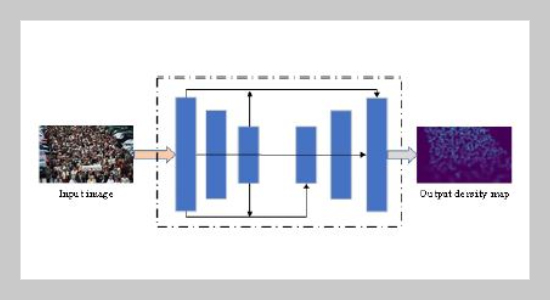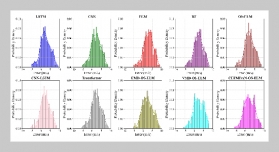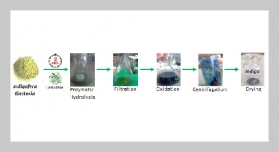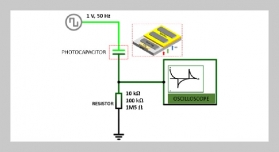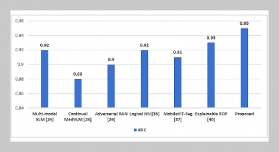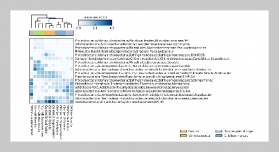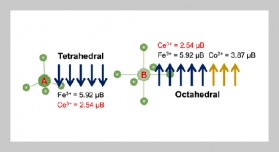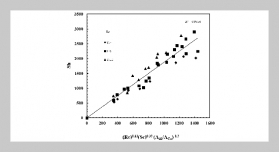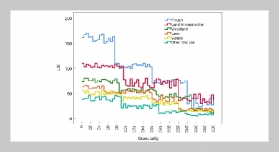REFERENCES
- [1] Y. Xia, Y. He, S. Peng, X. Hao, Q. Yang, and B. Yin, (2021) “EDENet: Elaborate density estimation network for crowd counting" Neurocomputing 459: 108–121. DOI: 10.1016/j.neucom.2021.06.086.
- [2] B. Li, H. Huang, A. Zhang, P. Liu, and C. Liu, (2021) “Approaches on crowd counting and density estimation: a review" Pattern Analysis and Applications 24(3): 853–874. DOI: 10.1007/s10044-021-00959-z.
- [3] M. Jiang and S. Yin, (2021) “Facial expression recognition based on convolutional block attention module and multi-feature fusion" Int. J. of Computational Vision and Robotics: DOI: 10.1504/IJCVR.2022.10044018.
- [4] X. Wang, S. Yin, K. Sun, H. Li, J. Liu, and S. Karim, (2020) “GKFC-CNN: Modified gaussian kernel fuzzy Cmeans and convolutional neural network for apple segmentation and recognition" Journal of Applied Science and Engineering 23(3): 555–562. DOI: 10.6180/jase.202009_23(3).0020.
- [5] D. Wu, Z. Fan, and M. Cui, (2022) “Average up-sample network for crowd counting" Applied Intelligence 52(2): 1376–1388. DOI: 10.1007/s10489-021-02470-8.
- [6] L. Zhao, Z. He, W. Cao, and D. Zhao, (2018) “Real-Time Moving Object Segmentation and Classification From HEVC Compressed Surveillance Video" IEEE Transactions on Circuits and Systems for Video Technology 28(6): 1346–1357. DOI: 10.1109/TCSVT.2016.2645616.
- [7] H.-L. Zhu, P. Liu, J.-F. Liu, and X.-L. Tang, (2012) “A graph analysis method for abnormal crowd state detection" Zidonghua Xuebao/Acta Automatica Sinica 38(5): 742–750. DOI: 10.3724/SP.J.1004.2012.00742.
- [8] O. Müller, A. Simons, and M. Weinmann, (2017) “Beyond crowd judgments: Data-driven estimation of market value in association football" European Journal of Operational Research 263(2): 611–624. DOI: 10.1016/j.ejor.2017.05.005.
- [9] J. Yu, H. Li, S.-L. Yin, Q. Shi, and S. Karim, (2020) “Dynamic gesture recognition based on deep learning in human-to-computer interfaces" Journal of Applied Science and Engineering 23(1): 31–38. DOI: 10.6180/jase.202003_23(1).0004.
- [10] G. Gao, J. Gao, Q. Liu, Q. Wang, and Y. Wang, (2020) “Cnn-based density estimation and crowd counting: A survey" arXiv preprint arXiv:2003.12783: DOI: 10.48550/arXiv.2003.12783.
- [11] P. L. Mazzeo, R. Contino, P. Spagnolo, C. Distante, E. Stella, M. Nitti, and V. Renò, (2020) “MH-MetroNet- A Multi-Head CNN for passenger-crowd attendance estimation" Journal of Imaging 6(7): DOI: 10.3390/JIMAGING6070062.
- [12] S. Cahyawijaya, B. Wilie, and W. Adiprawita. “IDEnet: Inception-based deep convolutional neural network for crowd counting estimation”. In: 2018-October. Cited by: 1. 2018, 548–553. DOI: 10.1109/EECSI.2018.8752637.
- [13] L. Chen, G. Wang, and G. Hou, (2021) “Multi-scale and multi-column convolutional neural network for crowd density estimation" Multimedia Tools and Applications 80(5): 6661–6674. DOI: 10.1007/s11042- 020-10002-8.
- [14] A. Zhang, X. Jiang, B. Zhang, and X. Cao, (2020) “Multi-scale supervised attentive encoder-decoder network for crowd counting" ACM Transactions on Multimedia Computing, Communications and Applications 16(1s): DOI: 10.1145/3356019.
- [15] Y. Wang, S. Hu, G. Wang, C. Chen, and Z. Pan, (2020) “Multi-scale dilated convolution of convolutional neural network for crowd counting" Multimedia Tools and Applications 79(1-2): 1057–1073. DOI: 10.1007/s11042-019-08208-6.
- [16] Y.-J. Ma, H.-H. Shuai, and W.-H. Cheng, (2022) “Spatiotemporal Dilated Convolution with Uncertain Matching for Video-Based Crowd Estimation" IEEE Transactions on Multimedia 24: 261–273. DOI: 10.1109/TMM.2021.3050059.
- [17] S. Huang, H. Zhou, Y. Liu, and R. Chen, (2020) “High-Resolution Crowd Density Maps Generation with Multi-Scale Fusion Conditional GAN" IEEE Access 8: 108072–108087. DOI: 10.1109/ACCESS.2020.3000741.
- [18] D. B. Sam, S. Surya, and R. V. Babu. “Switching convolutional neural network for crowd counting”. In: 2017-January. Cited by: 594. 2017, 4031–4039. DOI: 10.1109/CVPR.2017.429.
- [19] S. K. Tripathy and R. Srivastava, (2021) “AMS-CNN: Attentive multi-stream CNN for video-based crowd counting" International Journal of Multimedia Information Retrieval 10(4): 239–254. DOI: 10.1007/s13735-021-00220-7.
- [20] R. Wang, T. Liu, J. Lu, and Y. Zhou, (2022) “Interpretable Optimization Training Strategy-Based DCNN and Its Application on CT Image Recognition" Mathematical Problems in Engineering 2022: DOI: 10.1155/2022/2170596.
- [21] S. Yin and H. Li, (2020) “Hot Region Selection Based on Selective Search and Modified Fuzzy C-Means in Remote Sensing Images" IEEE Journal of Selected Topics in Applied Earth Observations and Remote Sensing 13: 5862–5871. DOI: 10.1109/JSTARS.2020.3025582.
- [22] L. Zhu, H. Zhang, S. Ali, B. Yang, and C. Li, (2020) “Crowd counting via Multi-Scale Adversarial Convolutional Neural Networks" Journal of Intelligent Systems 30(1): 180–191. DOI: 10.1515/jisys-2019-0157.
- [23] M. Liu, J. Nie, and P. Lin, (2022) “Experimental and Numerical Analysis of the Uniaxial Tensile Properties of F321 Austenitic Stainless Steel at Different Temperatures" Acta Mechanica Solida Sinica 35(3): 409–420. DOI: 10.1007/s10338-021-00304-1.
- [24] M. Yuebo, C. Xuanrun, L. Guanghui, and X. Shengjun, (2021) “Crowd density estimation method based on multi-feature information fusion" Laser and Optoelectronics Progress 58(20): DOI: 10.3788/LOP202158.2010021.
- [25] Y. Zhang, H. Zhao, Z. Duan, L. Huang, J. Deng, and Q. Zhang, (2021) “Congested crowd counting via adaptive multi-scale context learning" Sensors 21(11): DOI: 10.3390/s21113777.
- [26] J. T. Zhou, L. Zhang, J. Du, X. Peng, Z. Fang, Z. Xiao, and H. Zhu, (2022) “Locality-Aware Crowd Counting" IEEE Transactions on Pattern Analysis and Machine Intelligence 44(7): 3602–3613. DOI: 10.1109/TPAMI.2021.3056518.
- [27] P. Li, H. Zhang, X. Fang, S. Li, H. Zhou, and X. Zhuang. “Research on Crowd Counting Based on Attention Mechanism and Dilation Convolution”. In: Cited by: 0. 2021, 157–162. DOI: 10.1109/ICCCS52626.2021.9449170.
- [28] R. Gouiaa, M. A. Akhloufi, and M. Shahbazi, (2021) “Advances in convolution neural networks based crowd counting and density estimation" Big Data and Cognitive Computing 5(4): DOI: 10.3390/bdcc5040050.


